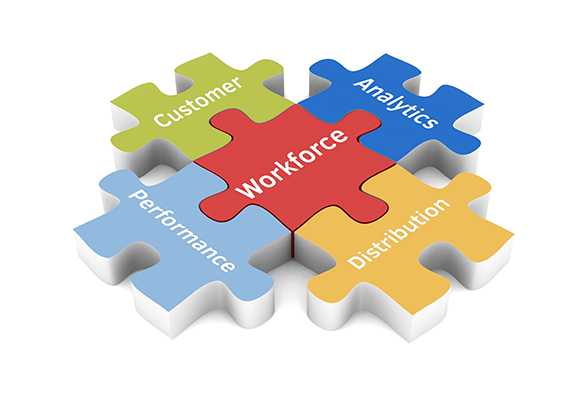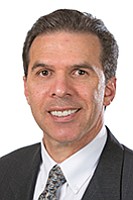
San Diego — Jim DeLapa admits without hesitation to spending hours standing outside banking centers. It’s part of the job.
After studying the foot traffic, he enters the financial institution to find out the reasons behind its level of patronage.
DeLapa, the CEO of Kiran Analytics, a San Diego-based company that uses predictive analytics to bolster retail bank branches’ operating efficiency, believes expertise gained through such on-the-ground methods is the reason for the company’s growth.
“Any top-performing business needs to adjust their delivery channel to meet the needs of their customers,” he said. “That’s where we come in.”
While banks continue to struggle with adopting methods to please their increasingly app-happy customers, the industry is perhaps ahead of others in its use of analytics because of the importance of fraud prevention.
Among its customers are five of the top 10 retail banks in the country, though the company declined to specify which ones. The company also has clients in Canada and the U.K.; in addition to San Diego, Kiran has an office in London.
As of early 2015, about 10,000 branches were using its software services, according to Kiran.
DeLapa said the company expects the run-rate of its SaaS, or software as a service, to double by the first quarter of 2017, thanks in part to banks’ growing level of comfort with cloud computing.
Brick-and-Mortar
Headlines in recent years have trumpeted the closure of hundreds of bank branches, but the reports are overblown, DeLapa said.
As of 2015, there were more branches in operation in the United States than in 2005, he said. According to data from the Federal Deposit Insurance Corp., there were 93,283 branches in operation last year. The total peaked in 2009 at 99,550, but the number in operation as of the end of last year tops 2005’s total of 92,043, according to the FDIC. California has followed that nationwide trend, according to the data: in 2015, there were 7,099 branches operating, compared with 6,621 a decade prior.
“Drive around San Diego and go to any new neighborhood where they’re building houses and right after the Starbucks is in place, you’re going to see a Wells Fargo branch open, a Chase branch open, a U.S. Bank branch open,” he said.
Branch Balancing Act
The trick for banks striving to remain relevant in the internet age will be shrinking the footprint of their brick-and-mortar branches and ensuring they remain efficient as customers’ habits change, not necessarily shutting the doors, DeLapa said.
“That’s where customers go to open new accounts and establish new relationships,” he said. “If yo u have a channel in any business where 85 percent of your new business is coming through that channel you’re going be very reluctant to close that down.”
Still, “for most branches, you don’t need 10 teller windows, you just don’t,” he said. “It doesn’t give the customer a good feeling to walk in and see 10 teller windows and just two are staffed.”
Timothy Trombley, an assistant professor of finance at San Diego State University, said grocery stores are at the forefront of the predictive analytics movement. It makes sense for banks to use some of the same methods for staffing, he said.
“I would imagine every retailer would be itching to get into it as they see how successful other fields are with this data,” he said. “It would help banks be smarter about how they design their new locations and how they utilize their employees, which at the end of the day helps them to provide the same or better level of service while spending less money.”
Streamlined Staffing
Banks that work with Kiran start the process with a field study, or an in-person review by the consulting firm of the work being done at the branch,
The results, when combined with transactional data, allow the company to predict the workforce needed to complete the tasks done each day at a branch.
“That’s what we specialize in and that’s why the top banks are coming to us,” he said. “It’s very unusual for a company of our size to have top retail banks in the U.S., Canada and the U.K. as its customers; they just don’t like to do business with small companies. But if you have something that really helps their businesses, they’ll get on board.”
He said Kiran’s message to those banks isn’t that the company knows the banking industry better than the bankers, but that the data banks already have holds answers to achieving operational efficiency.
A branch that is overstaffed means the bank is wasting funds; too few employees and customers are impacted as service suffers.
People aren’t good at measuring how much work they do daily, so the field studies are key components of the work done by Kiran.
At times, DeLapa said the company has declined to work with banks that don’t buy in to those preliminary in-person reviews. Without studying a representative sample of branches, it’s nearly impossible to give banks usable data on how to optimize their workforce, he said.
Bad data, he added, is worse than no data.
Screening Potential Hires
Kiran also uses the data to ease the recruiting process for banks seeking new employees.
About a year ago, the company began offering a screening for potential employees based on what it has learned a specific bank needs in its workers.
Just like people aren’t able to accurately quantify the time they spend working, humans are also fallible when it comes to hiring, DeLapa said.
The screenings are intended to provide a more objective measure before a prospective hire gets to the interview stage, he said.
So far, they’ve conducted more than two million assessments.
At the moment, Kiran is seeking Privacy Shield certification — the successor to the Safe Harbor agreement between the U.S. and Europe allowing transfer and processing of data between servers.
“Our expertise is really coming into play,” DeLapa said, especially as the financial world becomes more regulated and complex.
But while Kiran employees are experts in the retail banking realm, the modeling software that enables them to provide analysis to clients doesn’t know the data is finance-focused.
Someday, DeLapa said, Kiran will likely use that same software in other industries.
KIRAN ANALYTICS
CEO: Jim DeLapa
Founded: 1990; in 2008, rebranded Kiran Consulting Group as Kiran Analytics
Employees: 50
Growth: Total bank branches using software to double from 10,000 in 2015 to 20,000 by early 2017, according to the company.
Description: Provides large banks in the United States, Canada and the United Kingdom with software that can screen prospective hires and assist in staffing branches appropriately using predictive analytics.

Jim DeLapa
